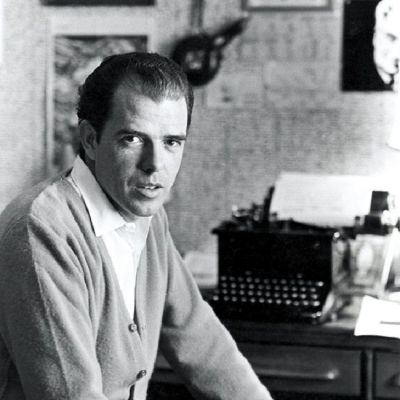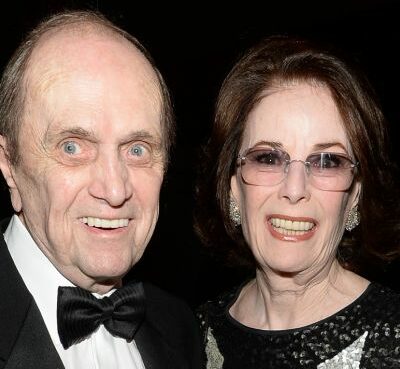William Kennedy is a well-known American author. William Kennedy is best known for his novels “Ironwood,” “The Cotton Club,” and “The Ink Truck,” among others. Prior to entering the fictional world of books, he worked as a journalist. Many of William’s novels revolve around the fictional Irish-American Phelan family of Albany, New York.
Quick Facts
| Full Name: | William Kennedy |
|---|---|
| Born Date: | 16 Jan 1928 |
| Age: | 95 years |
| Horoscope: | Capricorn |
| Gender: | Male |
| Profession: | Author, Journalist |
| Country: | USA |
| Marital Status: | married |
| Wife | Ana Daisy (Dana) Segarra |
| Net Worth | $2 million |
| Eye Color | Dark Brown |
| Hair Color | Brown |
| Birth Place | Albany, New York |
| Nationality | American |
| Ethnicity | Irish descendent |
| Education | University of Puerto Rico (creative writing) |
| Father | William Joseph |
| Mother | Mary Elizabeth (McDonald) Kennedy |
| Kids | Three (Dana, Katherine, Brendan) |
| IMDB | William Kennedy IMDB |
| Wiki | William Kennedy Wiki |
William Kennedy Biography
The full name of William Kennedy is William Joseph Kennedy. He was born in Albany, New York on January 16, 1928. William is now 95 years old. Father William Joseph Kennedy and mother Mary Elizabeth (McDonald) Kennedy, are his parents. They were descendants of Irish immigrants who settled in North Albany in the nineteenth century.
Auther Kennedy grew up in the Irish-Catholic neighborhood of the North End, also known as Limerick. As a child, William worked as an altar boy at Sacred Heart Church and aspired to be a Catholic priest.
Furthermore, many of Kennedy’s relatives worked in politics. “Big Jim” Carroll, his great-grandfather, was a ward leader. William Jr.’s father worked the polls for the machine and occasionally drove him to Democratic Party rallies. Two of his mother’s brothers worked as political operatives as well.

Education
Kennedy went to Public School 20 for elementary school. He became interested in print journalism when he was in seventh grade. He started drawing cartoons and even launched his own newspaper. When he started high school at Christian Brothers Academy, he began writing articles for the school newspaper.
He later attended Christian Brothers Academy. Kennedy then left Albany after high school and enrolled at nearby Siena College in Loudonville, upstate New York. In 1949, he graduated with a BA degree. He rose to the position of executive editor of the Siena News, the college newspaper. Willaim Kennedy also enrolled at the University of Puerto Rico at Rio Piedras in a creative writing class taught by acclaimed novelist Saul Bellow.
William Kennedy Wife & Marriage
Who is William Kennedy Wife? William Kennedy met Ana Daisy (Dana) Segarra while working in Puerto Rico. She was a singer, a dancer, and an actress. The couple later married in Puerto Rico in 1957, but the exact date of their wedding is unknown. Dana, Katherine, and Brendan are the names of their three children. He resides in Averill Park, New York, a hamlet approximately 16 miles east of Albany.
William Kennedy Net Worth
William Kennedy is one of the wealthiest novelists and one of the most popular novelists. According to Wikipedia, Forbes, and Business Insider, William Kennedy’s net worth is around $1.5 million as of January 2024.
William Kennedy Professional Life
Following graduation, Kennedy worked as a sports editor and columnist for the Glens Falls Post Star. He was drafted into the United States Army in 1950 and assigned to the Fourth Division in Europe. His journalistic abilities, however, did not go unnoticed during his time in the Army. Until his discharge in 1952, William Kennedy worked on the division’s newspaper.
Later, in 1952, William Kennedy returned to his hometown and landed a job at the Albany Times-Union. He worked for the Union for the next four years before accepting a job with the Puerto Rico World Journal. Unfortunately, the paper went out of business after nine months, putting William Kennedy out of work for the time being.
William eventually got a job at the Miami Herald and lived there for a while before returning to Puerto Rico in 1957. William became the first managing editor of a new newspaper, the San Juan Star, after working in Puerto Rico for two years.
Following his marriage in Puerto Rico, William Kennedy turned his attention to writing fiction. This was the year he enrolled in Saul Bellow’s creative writing class. Kennedy’s early attempts at fiction impressed Bellow, who encouraged him to continue honing his craft.
William Kennedy attempted to write stories about Puerto Rico for a time. He did, however, struggle to write authoritatively about this country without sounding like a tourist. William soon discovered his muse, who urged him to return to his native Albany. He left journalism two years after starting with the San Juan Star. He did it instead to focus on his creative writing.
In 1963, Willaim Kennedy returned to Albany. He was 35 years old and had already ascended as far as he could in the world of print journalism. However, Kennedy’s father’s health deteriorated, so he accepted a part-time feature writer position at the Albany Times-Union. He did so to pay his bills while working on his creative projects.
William first gained attention for a series of features he created about his hometown, including its history, politics, and colorful characters. These works became the basis for Kennedy’s 1983 collection O Albany!. William was nominated for a Pulitzer Prize in 1965 for a series of articles about Albany’s poor neighborhoods.
Another lucrative avenue for William Kennedy’s writing abilities was the world of book reviewing. From 1964 to 1972, he wrote 37 reviews for the National Observer. He also contributed to prestigious national publications such as Life, The New Republic, Saturday Review, and the New York Times in the early 1970s. Despite his successes, William Kennedy was convinced that his true calling was to write novels.
William Kennedy realized his dream when he published his first novel, The Ink Truck, in 1969. This novel follows the exploits of Bailey, and a newspaper columnist caught in a strike. Similarly, the novel is based on a true-life labor dispute at the Times-Union.
Many of William’s observations about Irish Catholic life in Albany were woven into the narrative of his first book. He accomplished this by writing in a sarcastic prose style. The Ink Truck was praised by critics as a promising first novel, despite its somewhat sloppy construction and artistic debt to previous authors.
Later, William found inspiration in Albany’s history. It was for his next project, which combined history, fiction, and black humor. Legs, published in 1975, told the story of gangster Jack “Legs” Diamond’s final days. In 1931, he was killed in a shootout with his enemies in an Albany boarding house.
The setting for William Kennedy’s next novel, Billy Phelan’s Greatest Game, published in 1978, was inspired by prohibition-era Albany. However, the environment he chose to investigate was closer to home and did not require much research. It was the Democratic Party’s political machine at work. This book is told from the perspective of a journalist, Martin Daugherty, and revolves around an unsuccessful attempt to kidnap the son of a powerful political figure.




